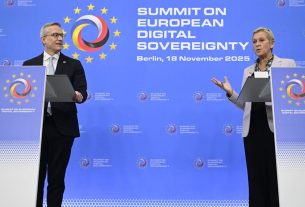The EU bioeconomy already contributes significantly to job creation and economic growth in Europe. It employs more than 17 million people (around 8% of EU jobs) and in 2023 had a value of €2.7 trillion. With its new strategy for bioeconomy, the EU aims to further unlock the bioeconomy’s potential to help it replace fossil-based materials and products, create jobs and lead the global shift to clean industries.
Bio-based products derive from biological resources on land and in the sea. Bio-based chemicals, for example, can be made from algae that are used to produce pharmaceuticals, personal care products and industrial applications. Bio-based plastics are used in packaging and automotive parts. And bio-based construction productions, textile fibres and fertilisers are increasingly in demand.
The proposed new Strategy will support activities that provide sustainable practical solutions and alternatives to critical raw materials using our biological resources in the following ways:
Make bio-based innovations a reality on the ground
- scale up bio-based innovations using a combination of public and private investments, as well as a streamlined regulatory environment
- ensure faster, clearer and simpler approvals for innovative solutions, especially for small businesses
- invest in bio-based technologies and establish a bioeconomy investment deployment group to stimulate private investment
Develop lead markets for bio-based materials and technologies
- boost demand for bio-based content in products, for example, by setting targets in relevant legislation
- set up a bio-based Europe alliance, which would gather EU companies to collectively purchase bio-based solutions
Secure a sustainable use of biomass
- promote circularity and enhance the value of secondary biomass – such as agricultural residues, by-products, and organic waste
- set up initiatives rewarding farmers and foresters who protect soils, enhance carbon sinks and support sustainable biomass use
Harness global opportunities
- support European industry in accessing global markets by securing partnerships that reduce vulnerability and ensuring that Europe is not dependent on a single region or a single resource
The new strategy builds on the 2012 Bioeconomy strategy and the reviews carried out in 2018 and 2022, shifting the focus towards industrial deployment, market scale-up, competitiveness and resilience.
For more information
Bioeconomy Strategy – Environment – European Commission
The facts about the bioeconomy – European Commission
5 things you need to know about the bioeconomy – Environment



